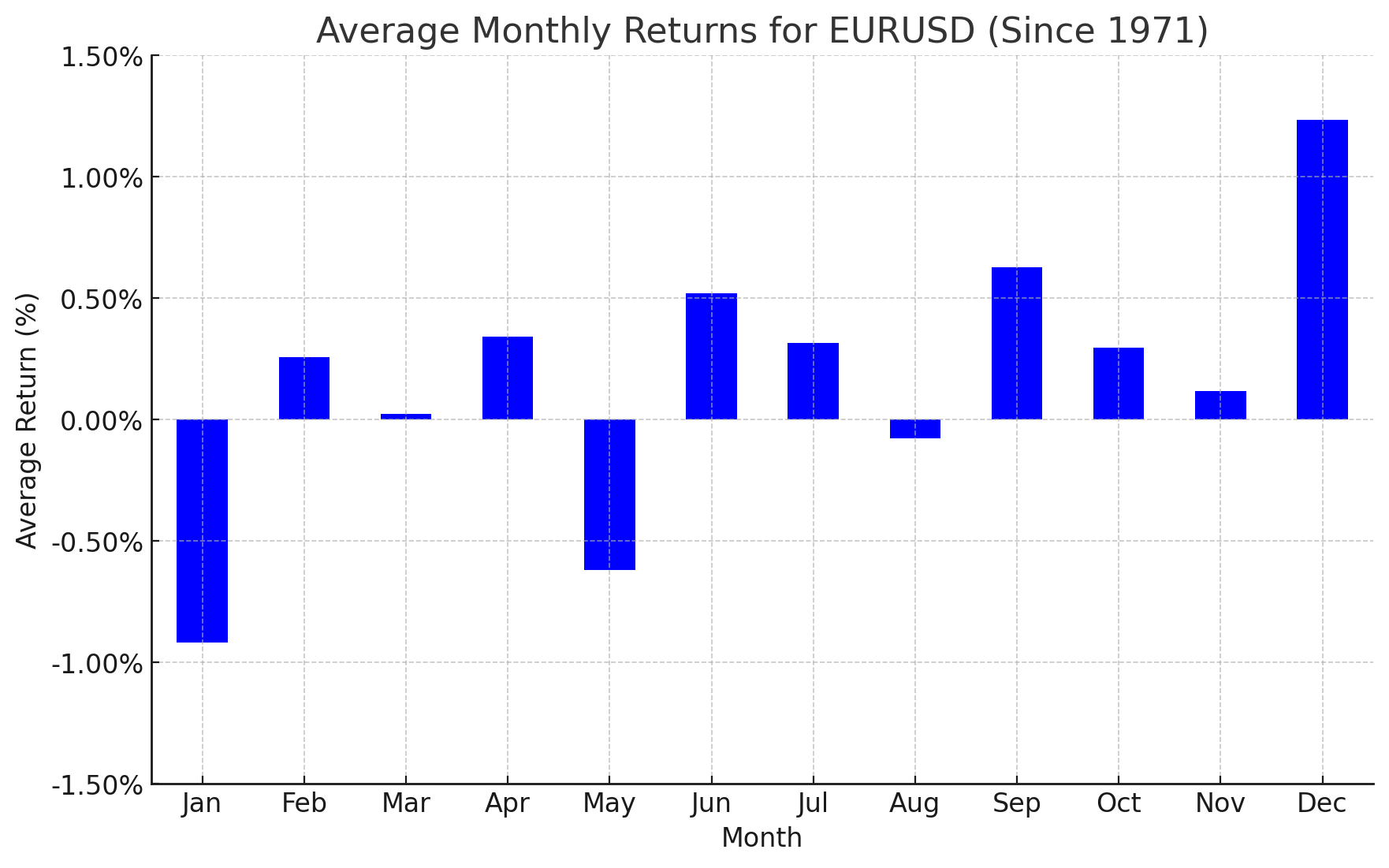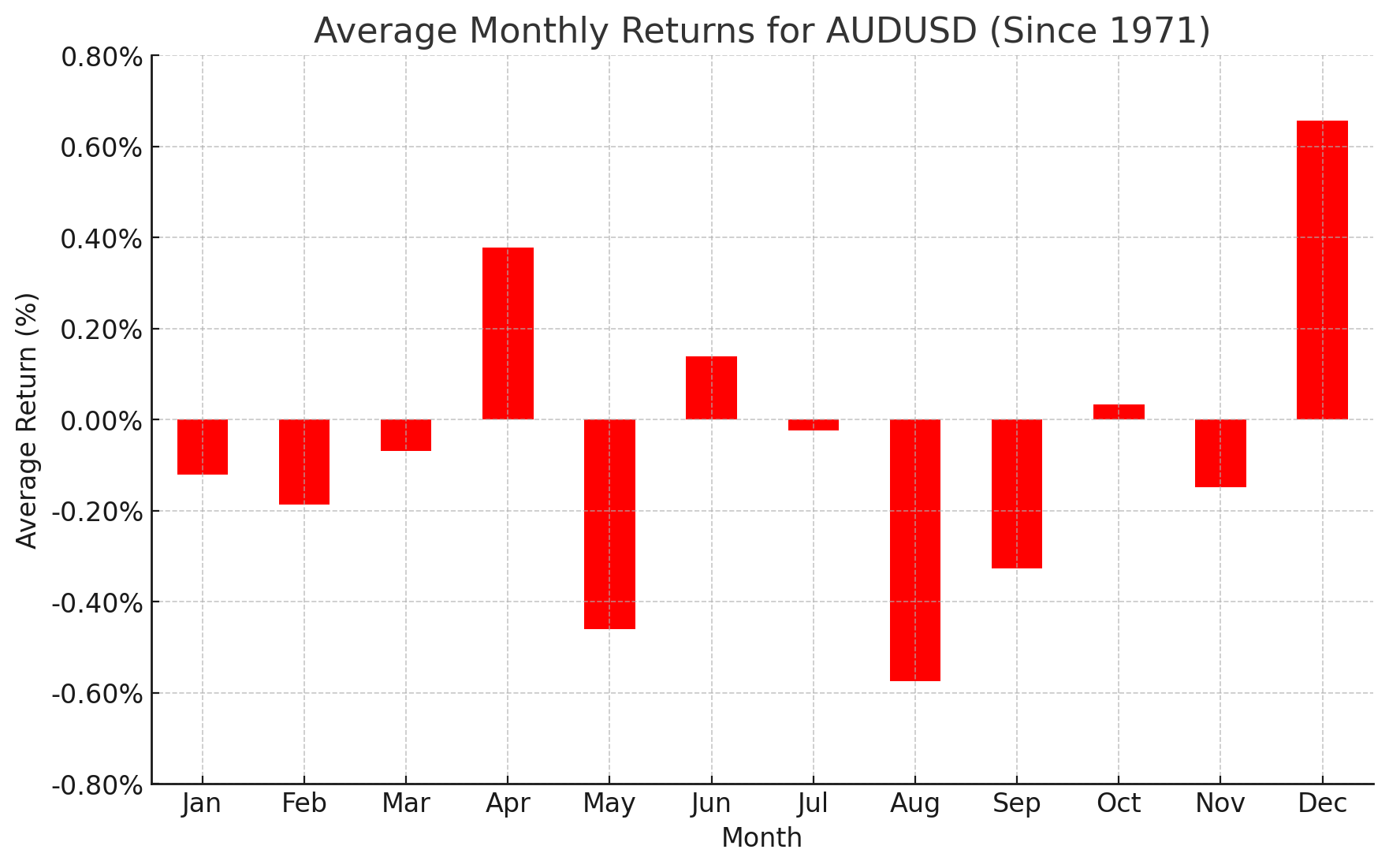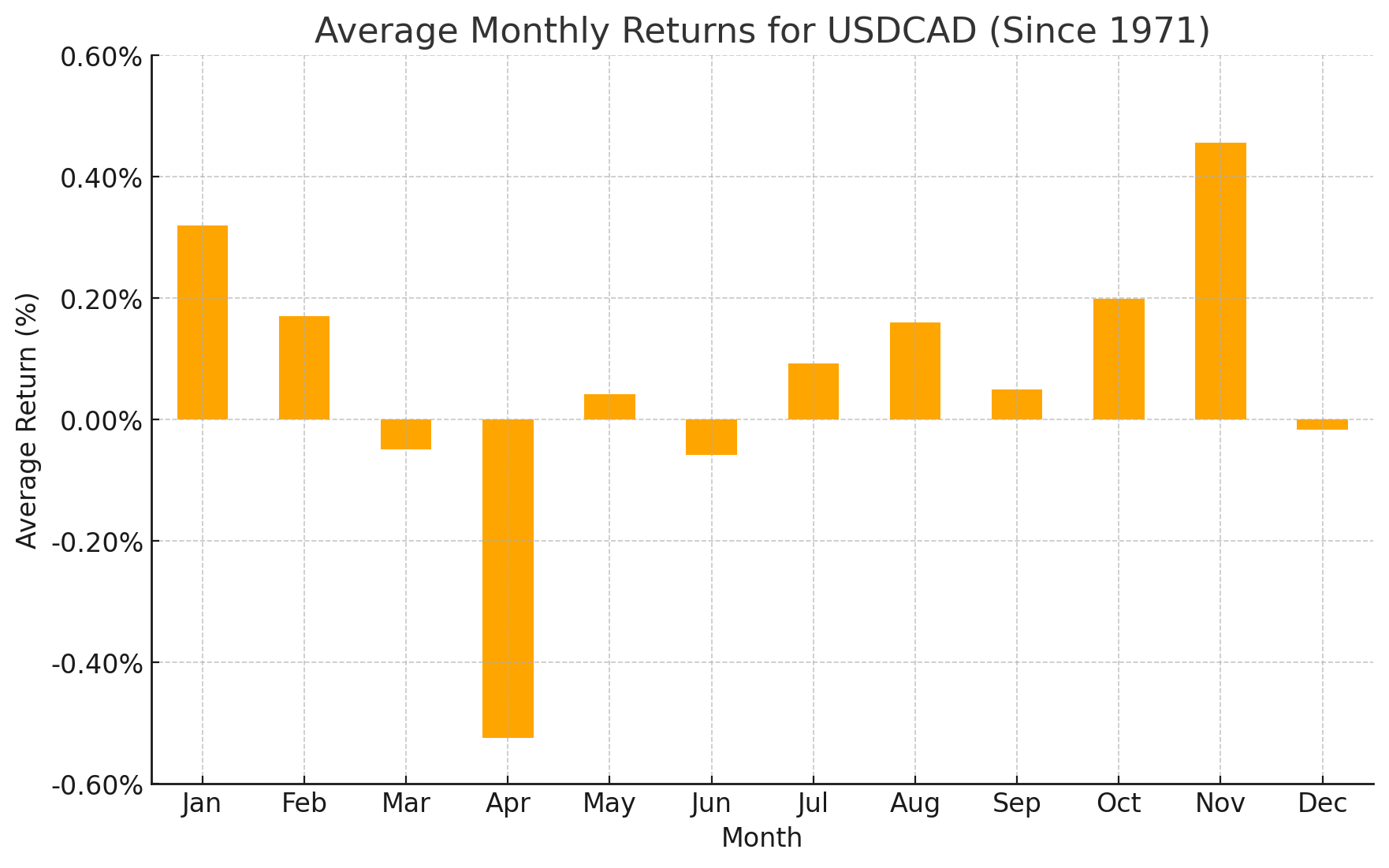GBP/USD, AUD/USD: August Weakness Looms Based on Historical Trends
2024.07.31 02:59
- August has historically been the weakest month for GBP/USD and AUD/USD.
- EUR/USD seasonality hints at downside potential, but the broader post-2023 range remains intact.
- USD/CAD has tended to see bullish price action in August, but after a big run-up to close July, a near-term dip could be in the cards.
The beginning of a new month marks a good opportunity to review the seasonal patterns that have influenced the forex market over the 50+ years since the Bretton Woods system was dismantled in 1971, ushering in the modern foreign exchange market.
As always, these seasonal tendencies are just historical averages, and any individual month or year may vary from the historic average, so it’s important to complement these seasonal leans with alternative forms of analysis to create a long-term successful trading strategy. In other words, past performance is not indicative of future results.
Euro Forex Seasonality – EUR/USD Chart
Source: TradingView, StoneX. Please note that past performance is not necessarily indicative of future results.
Historically, August has been a modestly bearish month for , with an average return of -0.08% across the month over the last 50+ years. July’s positive month (as of writing) matched the historic tendency but the world’s most widely-traded currency pair remains broadly flat within the year-to-date range between 1.06 and 1.10 so traders will be hoping for some volatility in either direction to inject some excitement into the pair
British Pound Forex Seasonality – GBP/USD Chart
Source: TradingView, StoneX. Please note that past performance is not necessarily indicative of future results.
Looking at the above chart, has historically seen its weakest performance in August, with average returns of around -0.49% since 1971. Cable did generally track with its bullish seasonality last month, and with the pair testing 2+ year highs near 1.30 as July winds down, it wouldn’t be surprising to see the pair pull back heading into September.
Japanese Yen Forex Seasonality – USD/JPY Chart
Source: TradingView, StoneX. Please note that past performance is not necessarily indicative of future results.
August has historically been a bearish month for , with the pair falling by an average of -0.28% in August since the Bretton Woods agreement. As the chart above shows, the entire late-summer/early fall window from June-October has historically been bearish for the pair, and with the BOJ expected to be one of the only major central banks tightening monetary policy in the latter half of the year, a (continued) run of yen strength wouldn’t be surprising.
Australian Dollar Forex Seasonality – AUD/USD Chart
Source: TradingView, StoneX. Please note that past performance is not necessarily indicative of future results.
Turning our attention Down Under, has seen historically bearish returns in August, with an average decline of -0.57% across the month, its most negative of all months. Taking a look at the AUD/USD chart, prices are near the middle of the year-to-date range, and a decline in August could be enough to drive rates toward the multi-year lows near 0.6300.
Canadian Dollar Forex Seasonality – USD/CAD Chart
Source: TradingView, StoneX. Please note that past performance is not necessarily indicative of future results.
Last but not least, August has been a somewhat bullish month for going back to 1971, with an average historical return of +0.16%. The North American pair is in the midst of a big bullish run as of writing, leaving rates overbought on a short-term basis as they approach 4+ year highs near 1.3900, so a near-term dip early in the month could be in the cards before the longer-term bullish seasonality reasserts itself.
As always, we want to close this article by reminding readers that seasonal tendencies are not gospel – even if they’ve tracked relatively closely so far this year – so it’s important to complement this analysis with an examination of the current fundamental and technical backdrops for the major currency pairs.
Original Post








